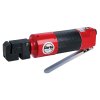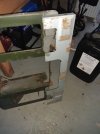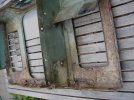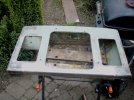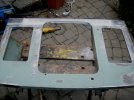my radiator panel has rotted out at the bottom like everyone else's.
I have bought the replacement panel.
Originally, i was thinking i would do careful measurements, cut both in exactly the right place (somewhere near the bottom of the vertical strips) and then butt weld them.
However:
1) my welding skills are not great, so i am not sure how good the result would be
2) making the cuts at precisely the right place with an angle grinder would not be easy - i would have to do my best to allow for the width of the cut, and i suspect it would still be difficult to get this right to the correct mm.
So i was wondering about buying one of the little air flange tools and putting a flange in the replacement panel, so that the flange sits behind the existing panel. This would
1) make the welds easier and stronger - i can weld on both front and back, and possibly use filler on any uneven sections
2) it makes measurement a bit easier - i can position the overlap so that the result is exactly right.
Has anyone else done something similar, or is there a good reason why i should not use the flange tool?
I have bought the replacement panel.
Originally, i was thinking i would do careful measurements, cut both in exactly the right place (somewhere near the bottom of the vertical strips) and then butt weld them.
However:
1) my welding skills are not great, so i am not sure how good the result would be
2) making the cuts at precisely the right place with an angle grinder would not be easy - i would have to do my best to allow for the width of the cut, and i suspect it would still be difficult to get this right to the correct mm.
So i was wondering about buying one of the little air flange tools and putting a flange in the replacement panel, so that the flange sits behind the existing panel. This would
1) make the welds easier and stronger - i can weld on both front and back, and possibly use filler on any uneven sections
2) it makes measurement a bit easier - i can position the overlap so that the result is exactly right.
Has anyone else done something similar, or is there a good reason why i should not use the flange tool?

